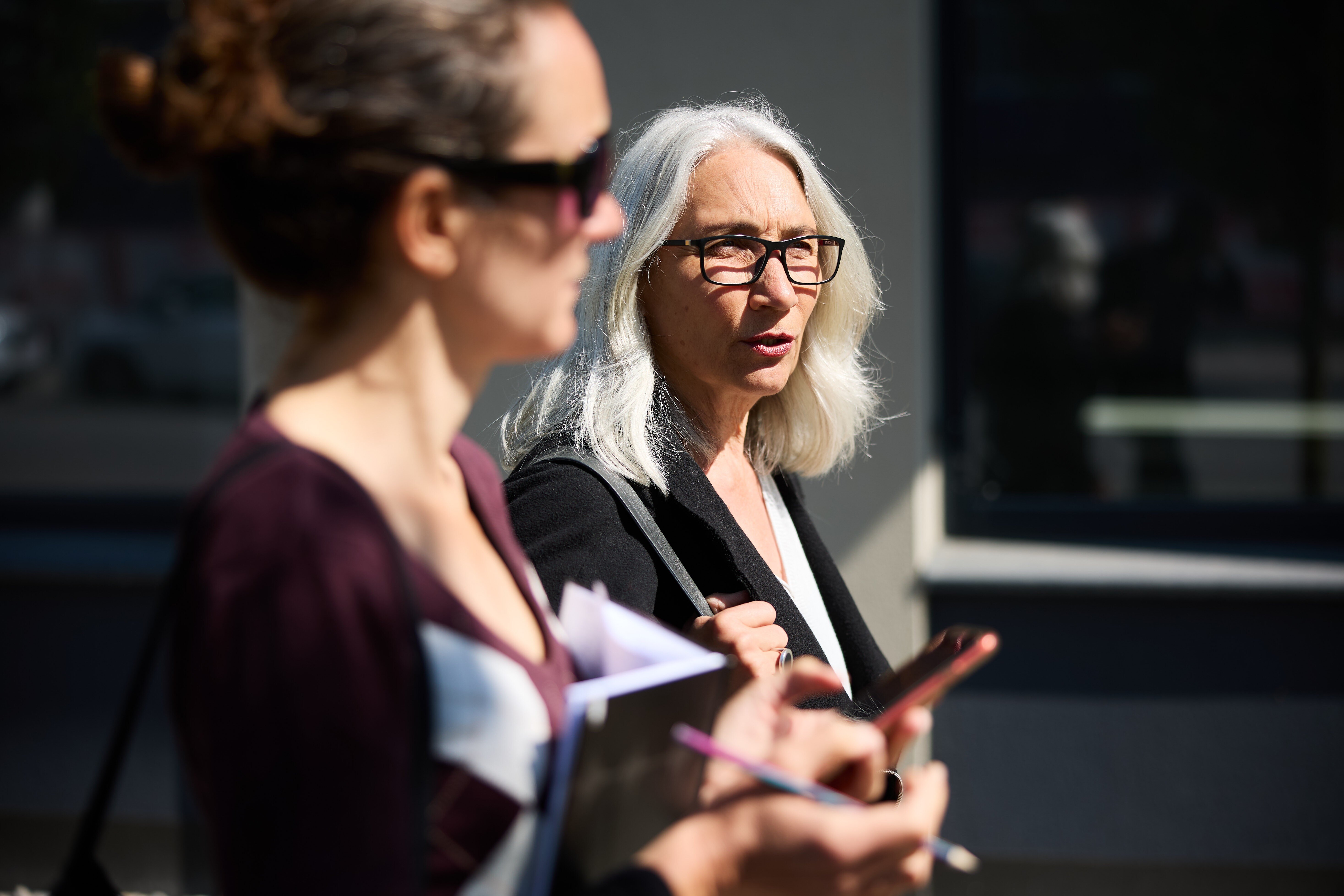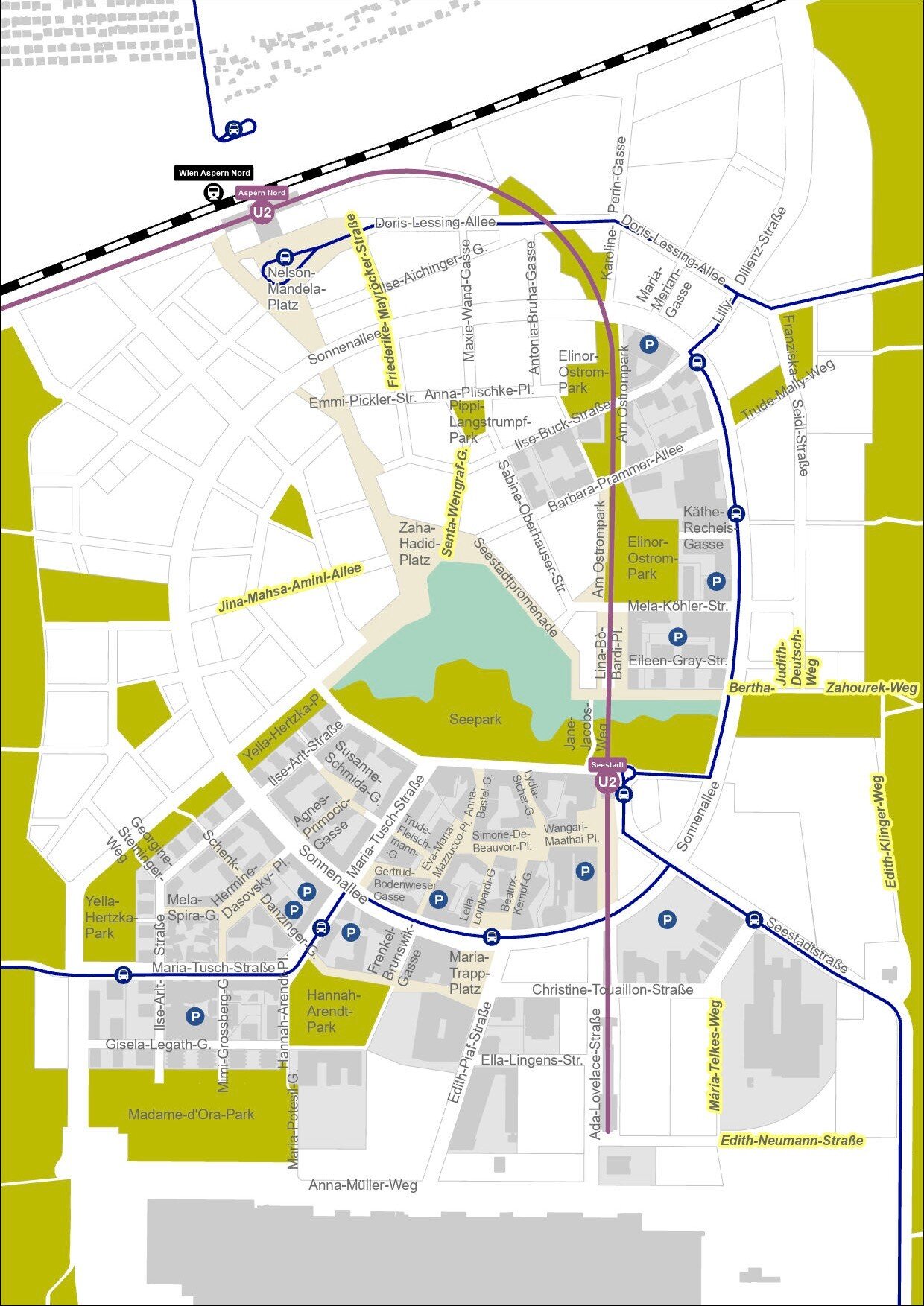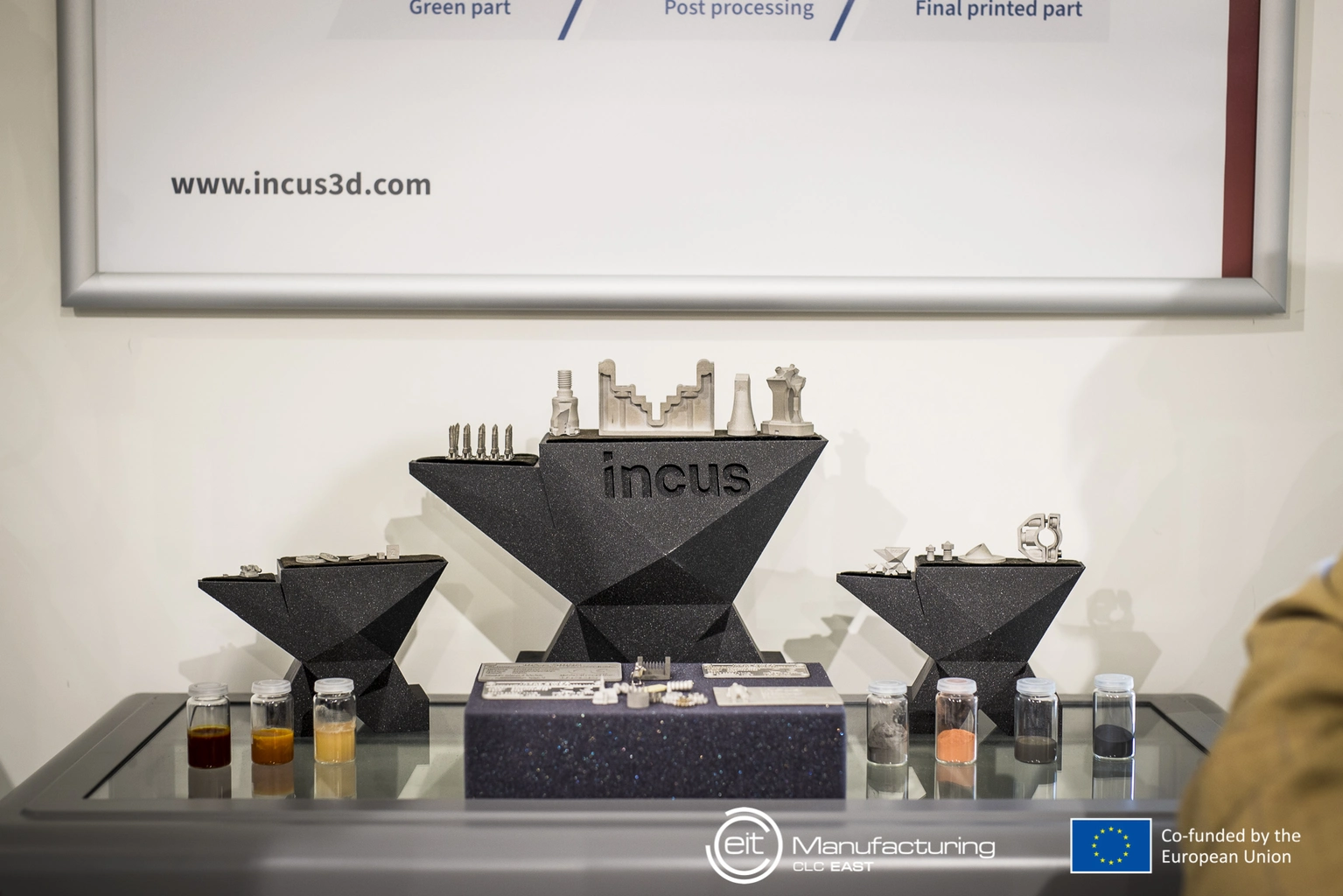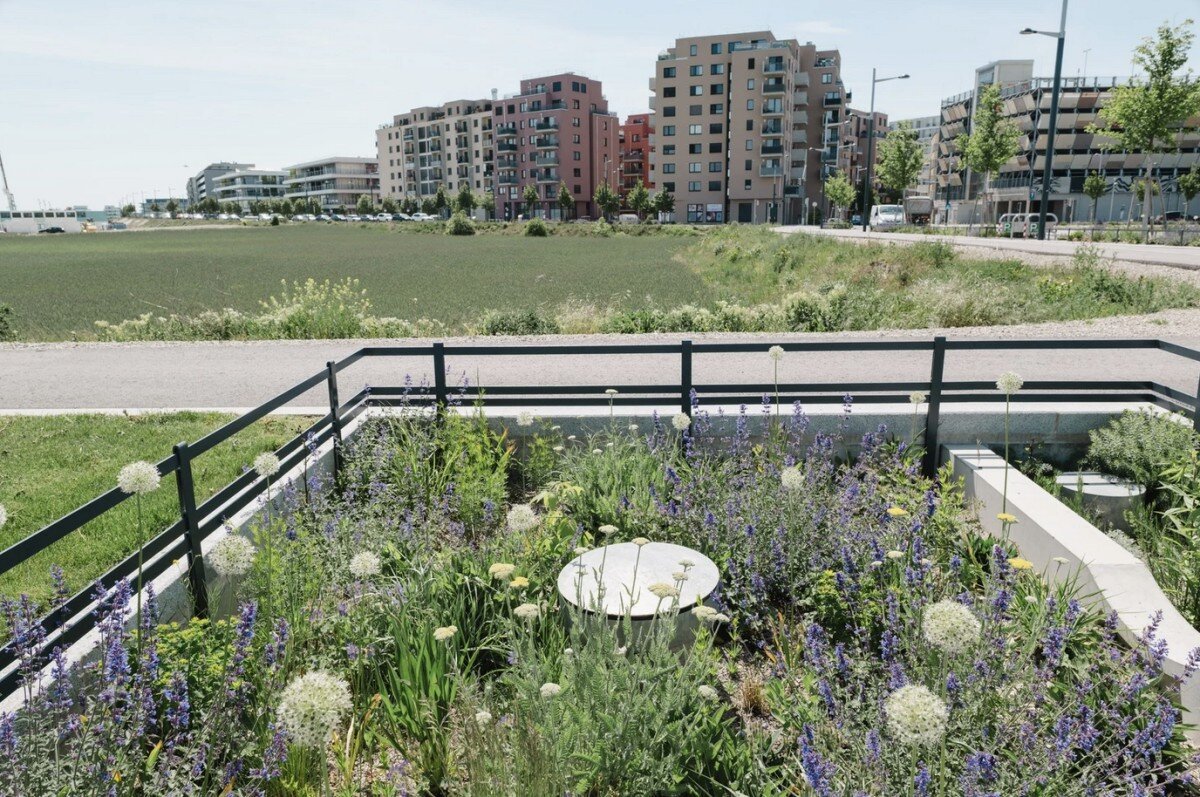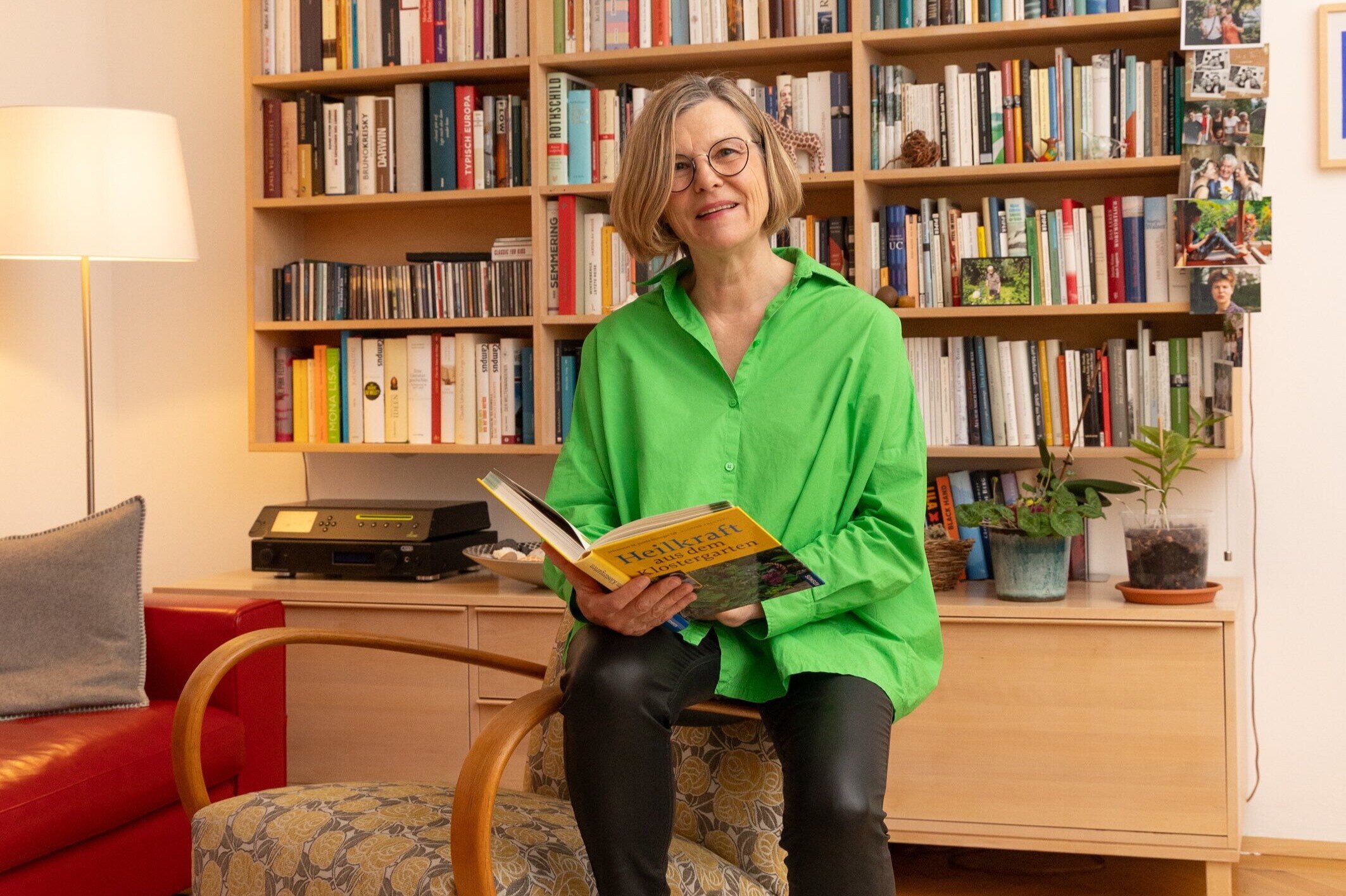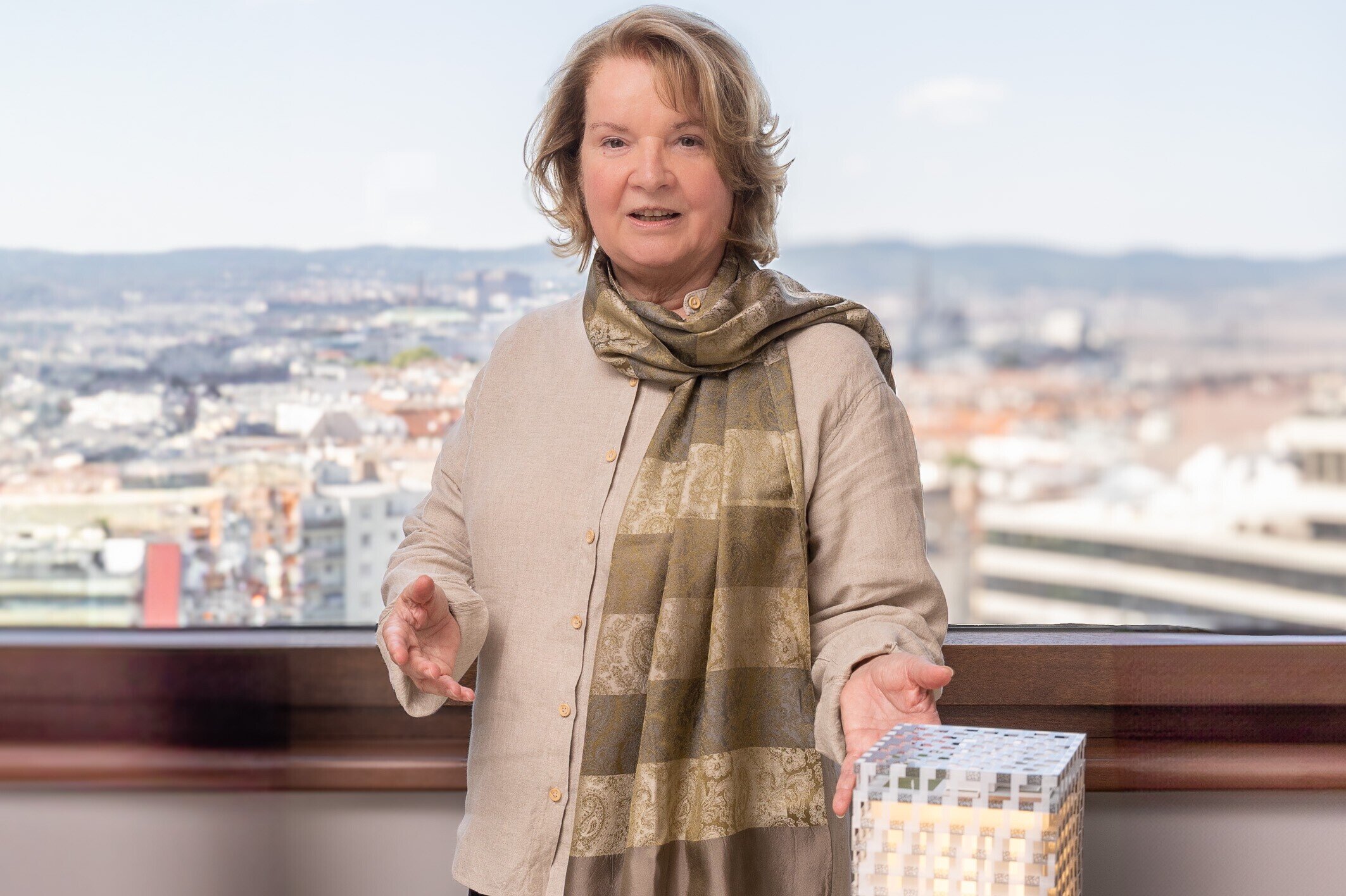Author
Theresa Seininger
Published on 09.07.2025
From the business magazine "Workflow"
2025 Inner:City

“Naming a street after someone is the highest honor a community can bestow – and street names have an impact on all of us.”
Petra Unger
Petra Unger, Begründerin der Wiener Frauen*Spaziergänge
As Petra Unger notes this, she happily lets her gaze wander. It’s a beautiful, sunny day as we walk through Seestadt, the young district in Vienna’s 22nd district, with the founder of the Vienna Women’s Walks. The occasion is a positive one: In addition to the many streets here already named after women, it was recently announced which other women will soon be added to the city map. Eight new names are set to join in the near future.
East of the future co-creative mile between Zaha-Hadid-Platz and Nelson-Mandela-Platz, the great Austrian artists Senta Wengraf and Friederike Mayröcker will be honored. The inventor Mária Telkes and the researcher Edith Neumann will give their names to streets in the southeastern business quarter. And on the opposite side of Seestadtstraße, adjacent to the eastern green corridor of Seestadt, sports enthusiasts will soon think of football pioneer Edith Klinger and swimmers Judith Deutsch and Bertha Zahourek as they head to the ÖFB training campus and, from 2030, to Vienna’s new municipal indoor pool. In 2023, the City of Vienna already dedicated a street in the west of Seestadt to Jina Mahsa Amini. The avenue named after her stands for solidarity with all Iranians fighting for freedom and democracy.
A Strong Statement
Just a few years ago, only five percent of Vienna’s streets were named after women; today, at least 13 percent of all street names honor women. The decision in Seestadt to almost exclusively use women’s names for new streets has played a major role in this progress. Thanks to the City of Vienna’s ongoing commitment, more and more streets are being named after women. Currently, Vienna has around 4,080 streets named after men and about 620 named after women.
In Seestadt alone, 64 streets, squares, and parks are already named after women who have left a lasting legacy through their life’s work. There are only two exceptions: Sonnenallee and Nelson-Mandela-Platz. Buildings have also been named after women, such as the Liselotte-Hansen-Schmidt Campus and, more recently, the Lotte-Brainin-Hof, a municipal housing complex.
By enriching its network of streets and paths with the names of more remarkable women, Seestadt is sending a powerful message. “This helps correct a long-standing imbalance. The lack of women’s history in public spaces is still shocking and shameful,” says Unger.
True Points of Reference
Petra Unger, city and culture mediator, academic advisor for feminist education and policy, and gender studies expert, knows how important and symbolic this approach is: “Street names contribute to a city’s collective memory and have great symbolic and political value. They are points of reference for identity formation – and they give people like me, who guide others through Vienna sharing knowledge and history, the chance to remember the historical figures who are immortalized,” says Unger, who often highlights famous female namesakes on her Vienna Women’s Walks.
As she smiles at every street sign during our walk through Seestadt, she emphasizes: “Naming streets after women ensures that their stories are permanently inscribed in the city map and thus in the cityscape, making women’s history visible in public spaces. Our society today sees itself as democratic. For street naming, this means that both women, as half the population, and various minorities in today’s society should be represented, depicted, and remembered.”
In the past, it was far too often about wealthy white men immortalizing themselves. “All of this urgently needs to change across the board,” she urges. “Otherwise, the collective public memory will create the impression that all groups without streets named after them – whether women or minorities – had no significant role in their society’s development. That would be fatal.”
As Unger explains, “Street names offer the opportunity to identify with history and are highly significant for the lives of residents.” Not only because the names of those honored appear on letters, labels, city maps, and official documents. “They also connect people living now in an invisible way with those from the past.” Anyone who reads a street name, whether on an address or a letter, and even more so, anyone who passes by or moves into that street, ideally engages with the namesake. “Street names thus offer the chance to engage with history that directly affects oneself.”
Naming a street often leads to further namings, Unger says, as she passes a poster for the Eva-Maria-Mazzucco-Markt: “After a street or square, a market or café is often named as well. That, of course, increases visibility and identification even more.”
No wonder the utmost care is taken when choosing namesakes. “You have to pay close attention to who is considered and what values are conveyed when a name is chosen,” says Unger.
“All the people after whom streets or similar places are named should be role models in attitude and deserve recognition.”
Petra Unger
Petra Unger, Begründerin der Wiener Frauen*Spaziergänge
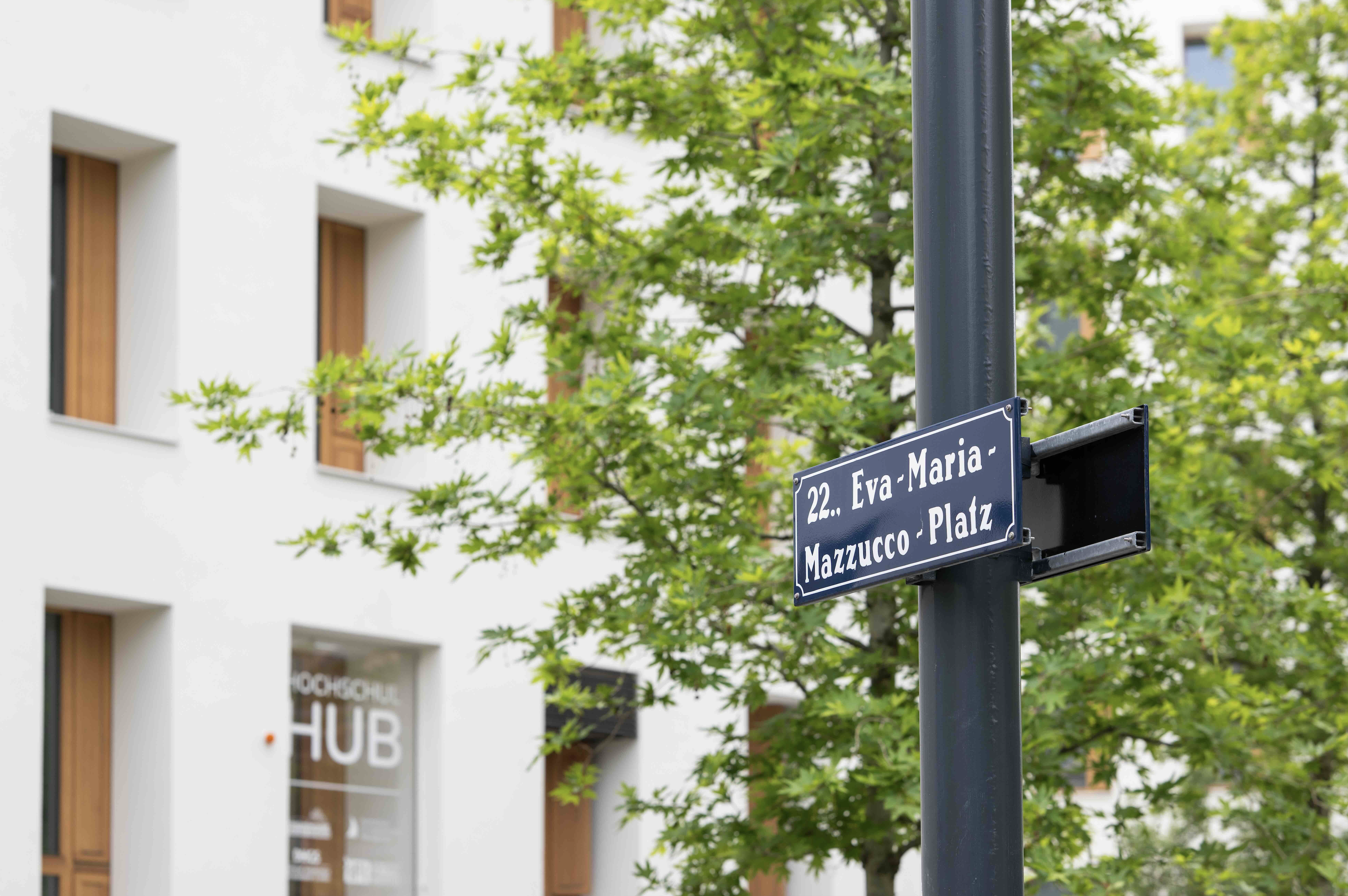
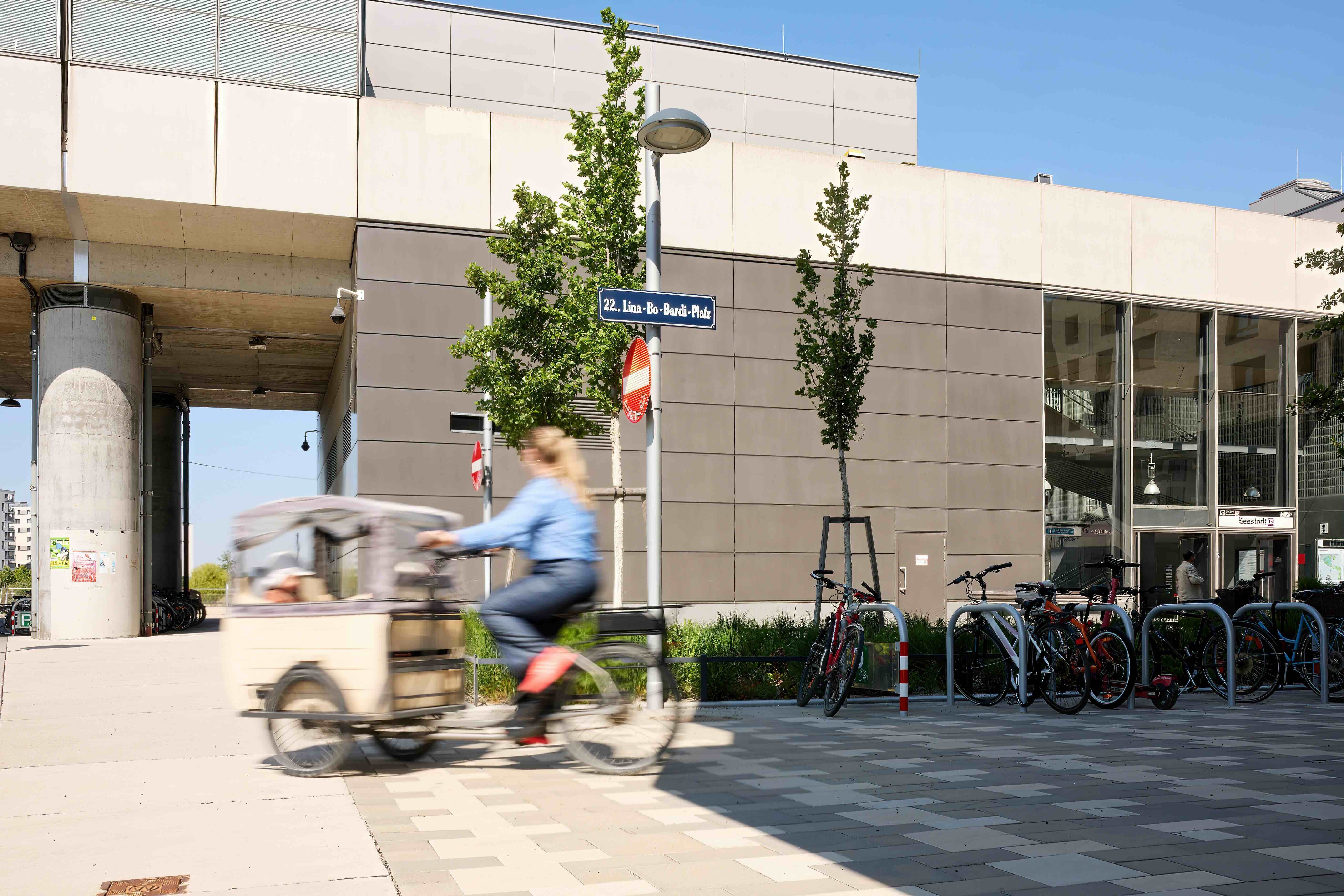
The Eva-Maria-Mazzucco-Platz hosts the market of the same name every Friday, and three universities have also chosen this address.
Lina-Bo-Bardi-Platz by the subway station is the gateway to Seestadt. © Luiza Puiu
Well-Thought-Out Strategy
In aspern Seestadt, a conscious decision was made to take an additional approach: The Vienna Institute for Social Science Documentation and Methodology (WISDOM) was initially commissioned by the development company for Seestadt, Wien 3420 aspern Development AG, to develop strategies for street naming in the new district. In a participatory, scientifically guided process with 30 experts, six thematic name worlds were created—always under the premise that if a person's name is used, it must be female. “Whether in science, culture, politics, sports, or social engagement—it's not just well-known personalities who are honored. We especially like to bring those into public awareness who have long lacked visibility,” says Ingrid Spörk, Head of Communications at Wien 3420.
Street naming is usually a district matter; anyone who wishes can submit suggestions to the district authority. The City of Vienna’s Department of Culture, MA 7, then initiates a review process. After a preliminary discussion in the subcommittee for street naming, established by the Vienna City Council, the final naming may be decided by the City Council Committee for Culture and Science.
Heroines
It’s especially meaningful when connections can be found between a person’s life and the area where the street is located. For example, Judith-Deutsch-Weg, Bertha-Zahourek-Weg, and Edith-Klinger-Weg will soon run exactly where the ÖFB training campus is being built and a new municipal indoor pool is planned. On the way to sports, you can remember that Bertha Zahourek was one of Austria’s first Olympic medalists and a pioneer of women’s swimming, that Judith Deutsch set national records in the same sport, was named Swimmer of the Year in 1935 – and that, as a Jewish woman, she refused to compete in the 1936 Berlin Olympics in protest and went into exile in 1938. Edith Klinger here does not refer to the TV presenter known for her work with animals, but to the pioneer of women’s football, who was not only an active player but also the first woman to become a certified referee by the Austrian Football Association.
Equally fitting: In the southern business quarter, you’ll soon walk on streets named after inventor Mária Telkes and researcher Edith Neumann. Several innovative companies have already settled here, including technology giant HOERBIGER and the internationally successful biopharmaceutical company Biomay, which conducts allergy research here, as well as the geothermal plant of Wien Energie.
Women’s Walks with Petra Unger: www.frauenspaziergaenge.at © Andreas Scheiblecker
At the technology center, developed by the Vienna Business Agency, which offers modern infrastructure for forward-thinking companies and research projects, the start-up nagene has set up shop, specializing in the production of synthetic DNA building blocks. Today’s innovation is thus symbolically linked to past research through street names in the neighborhood. Mária Telkes, for example, was a chemist and physicist who designed a solar-powered desalination plant that made seawater drinkable. She was also involved in developing the first house heated solely by solar energy. Chemist and microbiologist Edith Neumann was considered one of the most respected scientists in the medical laboratory field of the 20th century.
Other forms of remembrance are being encouraged in the northern part of Seestadt, where people walking along Jina-Mahsa-Amini-Allee will hopefully be inspired to research her name – and discover the life of the student who was fatally injured during her arrest by the Iranian morality police. Worldwide protests against the mullah regime and for women’s rights followed. “Painful parts of history are often reasons to name streets after someone,” explains Petra Unger. “It’s a way of acknowledging the injustice suffered – and it enables deep engagement.” Even more complicated names, says expert Unger, “are not a problem at all. Everyone gets used to them quickly, and ideally, it encourages many people to learn about that person.” As she says this, she walks from Lina-Bo-Bardi-Platz, named after an architect, designer, and stage designer, toward the lake and on to Zaha-Hadid-Platz, which is also under development and named after an architect. From there, Jina-Mahsa-Amini-Allee and Senta-Wengraf-Gasse, honoring the popular theater and film actress, will branch off. Nearby is Friederike-Mayröcker-Straße, in memory of an important voice in Austrian literature, who was also a recipient of the Georg Büchner Prize and the Austrian Book Prize.
The high symbolic value of street naming is also evident, says Petra Unger, “in the strong resistance that often arises during renaming discussions. It’s not just because people don’t want to reprint their stationery – that’s often just an excuse. Rather, it shows that people assign great symbolic value to a street name and that a name carries a sense of eternity.” After all, by choosing a woman as a namesake, “she is inscribed in collective memory for a long time. You can conclude: It’s also about immortality. The women after whom streets are now named will be remembered for many, many decades.”
Looking Ahead
Anyone looking up in Seestadt will always find an impressive life story – like these café visitors at Wangari-Maathai-Platz. Read more in the brochure “Seestadt is Female” © Luiza Puiu
© Wien 3420

